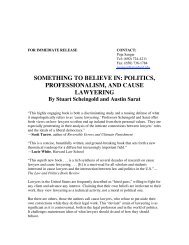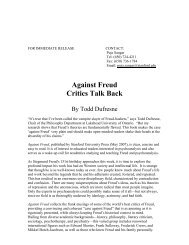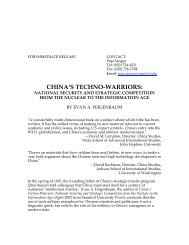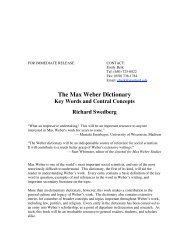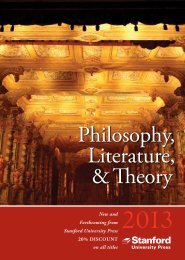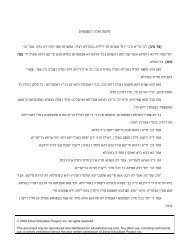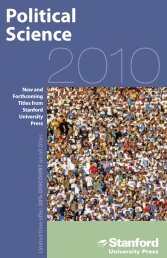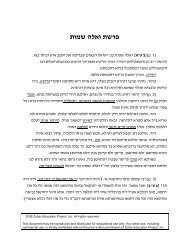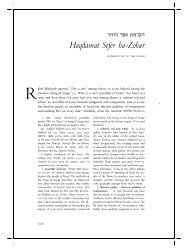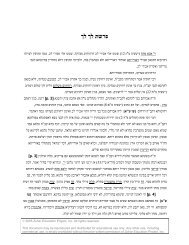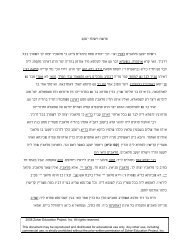Front Matter (PDF) - Stanford University Press
Front Matter (PDF) - Stanford University Press
Front Matter (PDF) - Stanford University Press
You also want an ePaper? Increase the reach of your titles
YUMPU automatically turns print PDFs into web optimized ePapers that Google loves.
Zohar ®rst made its appearance in Castile toward the end of the thirteenth<br />
The<br />
Passages from it are included in works by Castilian and Catalonian<br />
century.<br />
writingat about that time. In some cases these are presented as quotations,<br />
kabbalists<br />
attributed to ``Yerushalmi'' (usually referringto the Jerusalem Talmud,<br />
sometimes also to other work originating in the Holy Land) or to Midrash,<br />
but<br />
``the Midrash of Rabbi Shim'on son of Yoḥai.'' Some refer to it as<br />
particularly<br />
ancient work. In other cases, including passages in the writings of wellknown<br />
an<br />
Castilian kabbalist Moses de LeoÂn and the Barcelona author Baḥya ben<br />
pieces identical to sections of the Zohar are simply absorbed within<br />
Asher,<br />
writings and presented as their own. By the second decade of the four-<br />
their<br />
century, the Zohar is referred to (by the author of Tiqqunei Zohar) asa<br />
teenth<br />
or completed document. Large portions of it are by then available to<br />
``prior''<br />
authors as David ben Judah he-Ḥasid, who paraphrases and translates<br />
such<br />
sections, and the Italian kabbalist Menaḥem Recanati, who quotes<br />
various<br />
from the Zohar in his own commentary on the Torah. Recanati<br />
copiously<br />
to be the ®rst one to regularly refer to this group of sources by the<br />
seems<br />
Zohar.<br />
term<br />
question of the Zohar's origins has puzzled its readers ever since its<br />
The<br />
appearance, and no simple and unequivocal statement as to the question<br />
®rst<br />
its authorship can be made even in our own day. There is no question that<br />
of<br />
work was composed in the decades immediately precedingits appearance.<br />
the<br />
responds to literary works and refers to historical events that place it in the<br />
It<br />
following1270. The 1280s seem like the most likely decade for composition<br />
years<br />
of the main body of the Zohar, probably preceded by the Midrash ha-<br />
and possibly certain other sections. Indeed it is quite possible that the<br />
Ne'lam<br />
was still an ongoing project when texts of it ®rst appeared, and that<br />
Zohar<br />
of it were beingwritten even a decade later. Because the question of the<br />
parts<br />
origins has been so hotly debated by readers and scholars over the<br />
Zohar's<br />
it is important to offer a brief account here of the history of this<br />
centuries,<br />
discussion.<br />
about the Zohar's origins began in the very decade of its appearance.<br />
Debate<br />
of the Zohar were ®rst distributed by Rabbi Moses de LeoÂn, who<br />
Fragments<br />
that they were copied from an ancient manuscript in his possession.<br />
claimed<br />
was a classic technique of pseudepigraphy, the attribution of esoteric<br />
This<br />
to the ancients, to give them the respectability associated with hoary<br />
teachings<br />
While some naive souls seem to have believed quite literally in the<br />
tradition.<br />
of the text and the existence of such a manuscript, others, including<br />
antiquity<br />
of De LeoÂn's fellow kabbalists, joined with him in the pretense in order<br />
some<br />
Introduction<br />
IV<br />
l<br />
heighten the prestige of these teachings. While they may have known that<br />
to<br />
LeoÂn was the writer, and may even have participated in mystical conversa-<br />
De<br />
tions that were re¯ected in the emerging written text, they did believe that the



